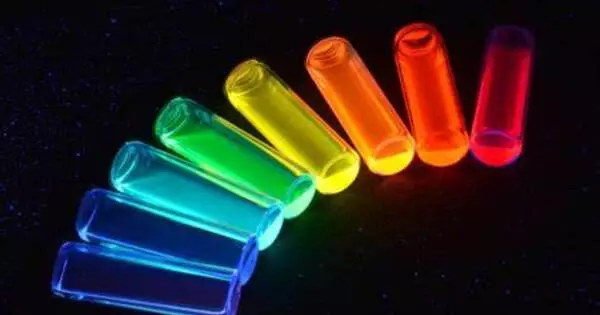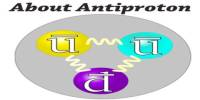Quantum dots (QDs), also known as semiconductor nanocrystals, are semiconductor particles a few nanometres in size with optical and electrical properties that differ from those of bigger particles due to quantum mechanical processes. These are nanoscale semiconductor particles with distinct optical and electrical properties related to their size and composition. They are an important topic in nanotechnology and materials research. When the quantum dots are exposed to UV light, an electron in the quantum dot can be stimulated to a higher energy state. They are often made of materials such as cadmium selenide (CdSe), lead sulfide (PbS), or indium arsenide (InAs).
Quantum dots can be as small as a few nanometers in diameter or as large as tens of nanometers in diameter. This mechanism corresponds to an electron transition from the valence band to the conductance band in the case of a semiconducting quantum dot. When an excited electron returns to the valence band, its energy is released as light. The picture on the right depicts light emission (photoluminescence). The energy difference between the conductance and valence bands, or the transition between discrete energy states in QDs when the band structure is no longer well-defined, determines the color of that light.
Some key characteristics of quantum dots:
- Size-Dependent Properties: These are well-known for having size-dependent qualities, which means that their electrical and optical properties may be accurately controlled by varying their size. Researchers can use this tunability to create quantum dots with specified emission wavelengths and electrical characteristics.
- Fluorescence and Luminescence: When activated by external energy sources such as light or electricity, they can emit light. Because of this, they are useful in applications like as biological imaging and displays. Because their fluorescence can be controlled throughout a wide range of wavelengths, they are useful for a variety of imaging and lighting applications.
- Quantum Efficiency: These often have high quantum efficiency, meaning they can emit a significant amount of light in response to absorbed photons. This efficiency is particularly useful for applications that require bright and efficient light emission, such as in LED displays.
Application
- Biomedical Imaging: These are used extensively in biomedical imaging due to their brightness, photostability, and tunable emission wavelengths. They can be functionalized with biomolecules for targeting specific cells or tissues, making them valuable tools for tracking and studying biological processes.
- Display Technology: These are used in some display technologies, like QLED (Quantum Dot Light Emitting Diode) displays. In QLED displays, quantum dots are used to enhance the color purity and efficiency of the backlight, resulting in brighter and more vibrant colors for LCD screens.
- Solar Cells: These are being researched for usage in solar cells to boost their efficiency. Researchers are focused on producing quantum dot solar cells that can capture a greater range of wavelengths from the sun spectrum, potentially enhancing overall energy conversion efficiency.
The Nobel Prize in Chemistry in 2023 is not the first to be awarded for nanotechnology research. However, it is possibly the most flamboyant application of technology to be linked with the honor.
This year’s prize goes to Moungi Bawendi, Louis Brus, and Alexei Ekimov for discovering and developing quantum dots. For many years, these perfectly produced nanometer-sized particles – barely a few hundred thousandths the width of a human hair in diameter – were the darlings of nanotechnology pitches and presentations.
















